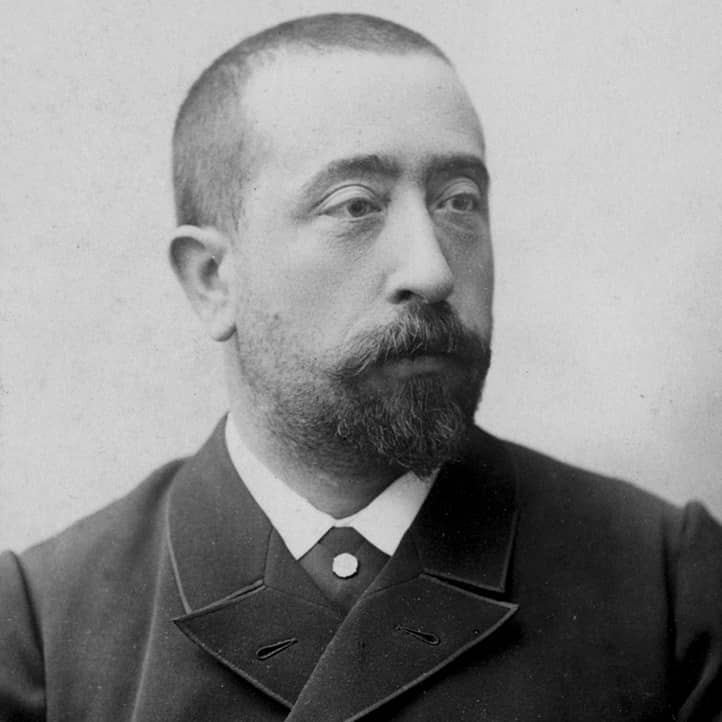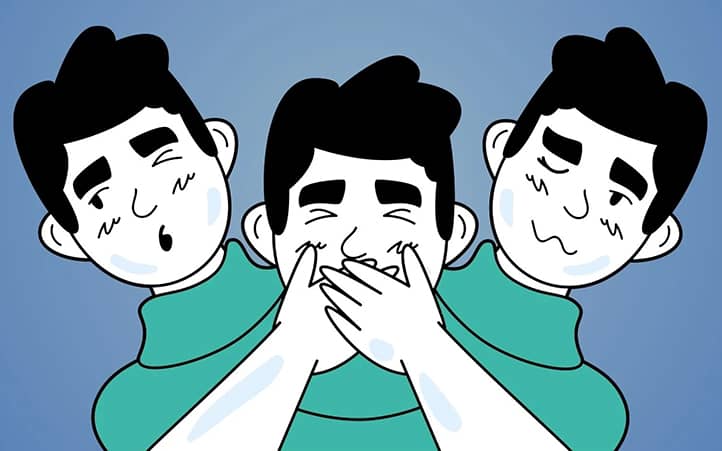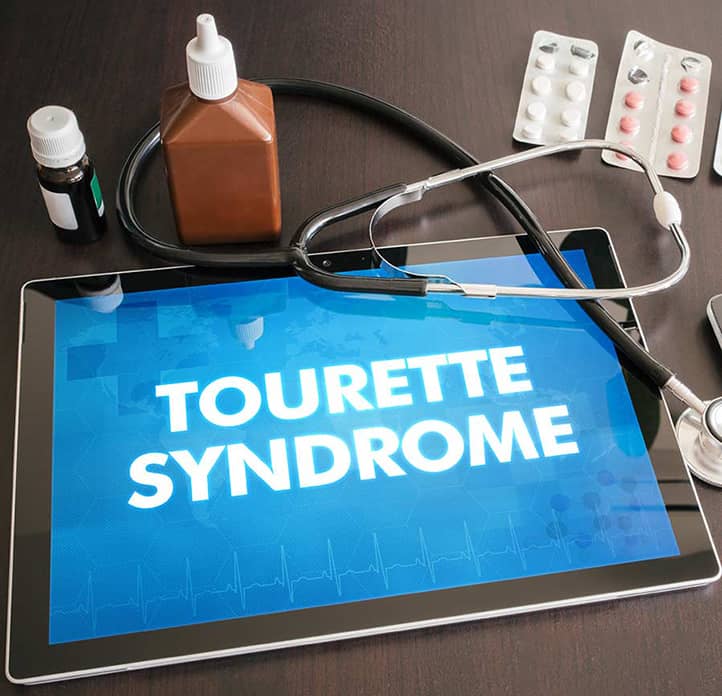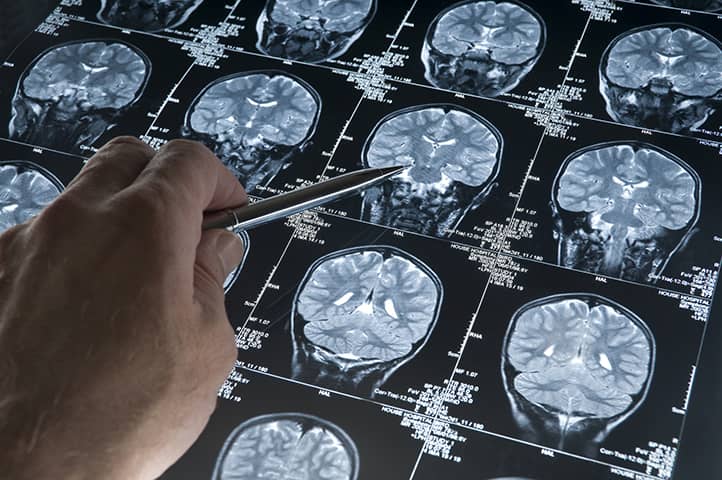Tourette Syndrome is a complex neuropsychiatric disorder characterized by the presence of multiple motor tics and at least one vocal tic. This condition, named after the French neurologist Georges Gilles de la Tourette, who first described it in 1885, continues to intrigue the medical community with its complexity and multifaceted manifestations.
Tourette Syndrome typically begins in childhood, most often between the ages of 5 and 10. According to current epidemiological data, the prevalence of Tourette Syndrome is around 1% among school-aged children, with boys affected 3-4 times more frequently than girls. However, the true prevalence may be higher, as many cases remain undiagnosed or misdiagnosed.
In this article, I will review modern approaches to diagnosing, treating, and supporting individuals with Tourette Syndrome, drawing on the latest scientific research and clinical guidelines.

What is Tourette Syndrome: Clinical Picture
Tourette Syndrome is a neurodevelopmental disorder that, like a chameleon, can take on various forms and shades. Each case is unique, like a fingerprint, and may vary significantly in the severity of symptoms and their impact on the patient’s life.
Behind the visible manifestations of tics lies a complex neurobiological picture. Studies show that Tourette Syndrome is based on dysfunctions in the basal ganglia and frontal cortex of the brain – areas responsible for controlling movement and behavior. These disruptions create a “neural noise,” which manifests as tics.
Interestingly, the symptoms of Tourette Syndrome often have a wave-like character. Periods of relative calm can be followed by exacerbation, adding additional challenges for both patients and doctors. Understanding this dynamic is crucial for accurately assessing the patient’s condition and choosing an appropriate treatment strategy.
Key Symptoms of Tourette Syndrome
The hallmark of Tourette Syndrome is tics – rapid, repetitive, irregular motor movements or vocalizations. These are divided into two main categories:
- Motor Tics: These are involuntary movements of various parts of the body. They can be:
- Simple: Short, sudden movements, such as blinking, shoulder shrugging, or head nodding.
- Complex: Longer, purposeful actions, such as jumping, touching objects or others, or mimicking others’ movements (echopraxia).
- Vocal Tics: These are involuntary sounds or words. They can also be:
- Simple: Individual sounds, such as coughing, grunting, or whistling.
- Complex: Words, phrases, or even full sentences. This includes the well-known coprolalia – the involuntary utterance of inappropriate words, which, contrary to popular belief, occurs in only 10-15% of patients with Tourette Syndrome.
It’s important to note that tics often intensify during periods of stress, excitement, or fatigue, and can be temporarily suppressed through willpower. However, this suppression often leads to increased internal tension and subsequent tic escalation.
Comorbid Disorders
Tourette Syndrome rarely occurs in isolation. Most patients experience comorbid mental disorders that often cause more problems than the tics themselves:
- Attention Deficit Hyperactivity Disorder (ADHD): Present in 50-60% of patients with Tourette Syndrome, characterized by difficulties with attention, impulsivity, and hyperactivity.
- Obsessive-Compulsive Disorder (OCD): Observed in 30-50% of patients, characterized by intrusive thoughts (obsessions) and/or repetitive actions (compulsions).
- Anxiety Disorders: Found in about 40% of patients, including generalized anxiety disorder, social phobia, and panic attacks.
- Depression: Observed in 20-30% of patients, especially in adolescence and adulthood, often linked to social isolation and low self-esteem due to tics.
- Sleep Disturbances: Many patients with Tourette Syndrome experience difficulties falling asleep, frequent night awakenings, and daytime sleepiness.
Understanding the full clinical picture, including both primary symptoms and comorbid disorders, is critical for accurate diagnosis and effective treatment of Tourette Syndrome.

Modern Diagnostic Methods
Diagnosing Tourette Syndrome is like piecing together a complex puzzle. Each symptom, each detail of the medical history, is a separate fragment that must be correctly interpreted and placed to see the full picture.
In the era of personalized medicine, a comprehensive approach to diagnosis is increasingly important. In addition to clinical evaluation, modern methods include neuropsychological testing to identify subtle cognitive and behavioral features characteristic of Tourette Syndrome.
It is important to remember that Tourette Syndrome is not a static condition, but a dynamic process. Therefore, modern diagnostics do not end with a one-time examination, but involve long-term monitoring of the patient. This allows tracking changes in the nature and intensity of symptoms over time and timely adjustment of treatment.
Diagnosing Tourette Syndrome can be challenging due to the variety of symptoms and their variability over time. The modern approach to diagnosis includes several key components:
Diagnostic Criteria
According to the Diagnostic and Statistical Manual of Mental Disorders (DSM-5), the criteria for diagnosing Tourette Syndrome include:
- Multiple motor tics and at least one vocal tic, present at some point during the illness, though not necessarily simultaneously.
- Tics must be present for more than one year.
- Onset of the disorder before age 18.
- Symptoms are not due to substance use or another medical condition.
Differential Diagnosis
It is important to distinguish Tourette Syndrome from other conditions that may cause similar symptoms:
- Chronic motor or vocal tic disorder (only motor or only vocal tics present).
- Provisional tic disorder (duration less than one year).
- Other movement disorders (e.g., chorea, myoclonus).
- Compulsions in OCD.
- Stereotypies in autism spectrum disorders.
Instrumental Methods of Investigation
Although the diagnosis of Tourette Syndrome remains predominantly clinical, modern instrumental methods can help rule out other diseases and investigate the neurobiological basis of the disorder:
- Neuroimaging:
- Magnetic Resonance Imaging (MRI) can be used to rule out structural brain abnormalities.
- Functional MRI (fMRI) allows the study of activity in different brain areas during tasks or tic occurrence.
- Electroencephalography (EEG): Useful for ruling out epileptic disorders, sometimes mistaken for tics.
Genetic Testing
Although a specific gene responsible for Tourette Syndrome has not been identified, genetic studies can sometimes be useful:
- To rule out genetic syndromes associated with tics (e.g., Fragile X syndrome).
- For research purposes to study genetic risk factors.
It is important to note that genetic testing is not a routine diagnostic method for Tourette Syndrome and is usually conducted only in specialized centers.
A comprehensive approach to diagnosis, including a thorough history, clinical examination, and additional tests as needed, not only confirms the diagnosis of Tourette Syndrome but also identifies comorbid disorders, which is critically important for developing an effective treatment plan.

Treatment of Tourette Syndrome
Treating Tourette Syndrome can be compared to conducting an orchestra. Each treatment method is a separate instrument, and the physician’s task is to create a harmonious combination of these instruments that best suits the specific patient.
One of the most interesting directions in modern therapy for Tourette Syndrome is the use of virtual reality. This technology allows the creation of controlled environments in which patients can practice managing their tics in various situations, especially useful for preparing for stressful life events.
Increasing attention is being paid to the role of the gut microbiome in the development and course of neurological disorders, including Tourette Syndrome. Preliminary studies show that dietary modification and probiotic use can positively impact symptoms in some patients, opening new prospects for developing complementary treatment methods.
The modern treatment strategy typically includes a combination of pharmacological and non-pharmacological methods.
Pharmacotherapy
Drug treatment is usually recommended for moderate and severe tics that significantly impact the patient’s daily life. The main classes of medications used to treat Tourette Syndrome include:
- Antipsychotic Drugs:
- Typical antipsychotics (e.g., haloperidol, pimozide) were long considered first-line drugs, but are now used less frequently due to side effects.
- Atypical antipsychotics (e.g., risperidone, aripiprazole) are considered safer and are often the first choice.
- Alpha-2 Agonists:
- Clonidine and guanfacine, initially developed as medications for treating hypertension, have shown effectiveness in reducing tics and ADHD symptoms.
- Botulinum Therapy:
- Botulinum toxin injections can be effective for localized motor or vocal tics.
- Other Medications:
- Tetrabenazine and topiramate are sometimes used in cases resistant to standard therapy.
- For comorbid conditions, antidepressants (for treating depression or OCD) or stimulants (for treating ADHD) may be prescribed.
Behavioral Therapy
Non-pharmacological treatment methods, especially behavioral therapy, are becoming increasingly important:
- Habit Reversal Training (HRT):
- This method involves teaching the patient to recognize sensations that precede a tic and to perform a competing response – a movement physically incompatible with the tic.
- Comprehensive Behavioral Intervention for Tics (CBIT):
- CBIT includes HRT, as well as relaxation techniques and functional analysis of tic-enhancing factors.
Studies show that these methods can be as effective as medication, especially in children and adolescents.
Deep Brain Stimulation (DBS)
DBS is a neurosurgical technique in which electrodes are implanted in specific areas of the brain to send electrical impulses. This method is considered for patients with severe tics resistant to other treatments. Although preliminary study results are promising, DBS is still considered an experimental treatment for Tourette syndrome.
Transcranial Magnetic Stimulation (TMS)
TMS is a non-invasive method that uses magnetic fields to stimulate specific brain areas. Although it has shown some effectiveness in reducing tics, further research is needed to determine its long-term effectiveness and safety.
Treatment choices should be based on the individual characteristics of the patient, symptom severity, and comorbid conditions. Often, the most effective approach is a combined strategy incorporating pharmacotherapy and behavioral methods.

Psychosocial Support
Psychosocial support for Tourette syndrome is not merely a supplement to medical treatment but an integral part of it. It serves as a bridge between the clinical realm and the patient’s daily life, helping to bridge the gap between medical recommendations and their practical implementation.
In recent years, online support platforms for people with Tourette syndrome have gained popularity. These virtual communities provide a safe space for sharing experiences, emotional support, and access to up-to-date information. They are especially valuable for patients in remote areas or those with difficulty attending in-person support groups.
An interesting aspect of psychosocial support is the use of art and creativity as a means of self-expression and symptom management. Many patients report that engaging in music, painting, or dance helps them better control tics and reduce overall stress levels. This approach is being actively studied and implemented in comprehensive rehabilitation programs.
Tourette syndrome can have a significant impact on patients’ social life, education, and professional activities. Therefore, psychosocial support is an important component of comprehensive treatment.
Educational Programs for Patients and Their Families
Understanding the nature of the disorder is often the first step toward effective symptom management. Educational programs may include:
- Information about the nature of Tourette syndrome, its course, and prognosis.
- Training in tic management strategies and associated symptoms.
- Information on available treatments and their effectiveness.
- Legal information on the rights of patients with Tourette syndrome in the educational and professional sectors.
Support Groups
Support groups play a crucial role in the psychosocial adaptation of patients with Tourette syndrome:
- They provide an opportunity to communicate with people who have similar experiences.
- They help to overcome feelings of isolation and stigmatization.
- They serve as a source of practical advice on managing symptoms in daily life.
- They can provide information about new treatments and research.
Many organizations, such as the Tourette Association of America, provide resources for creating and supporting such groups.
Adaptation in School and the Workplace
People with Tourette syndrome often face challenges in educational and professional settings. Some adaptation strategies include:
In School:
- Informing teachers and classmates about the nature of Tourette syndrome.
- Developing an individualized education plan that takes the child’s needs into account.
- Allowing extra time for assignments if tics interfere with learning.
- Providing an option to leave the classroom if tics intensify.
In the Workplace:
- Informing employers and colleagues about the disorder (if the patient feels comfortable doing so).
- Adapting the workspace (e.g., providing a private office if vocal tics disturb others).
- Flexible working hours to help manage symptoms.
It is important to note that in most countries, people with Tourette syndrome are protected by disability rights legislation, which requires employers and educational institutions to provide necessary accommodations.

New Research Directions
Research into Tourette syndrome lies at the intersection of various scientific disciplines, from molecular biology to social psychology. This interdisciplinary approach opens up unique opportunities for new discoveries and innovations in understanding and treating this complex disorder.
One of the most promising research directions is the study of epigenetic mechanisms involved in the development of Tourette syndrome. Epigenetics explains why identical twins can have different symptom severity levels and opens new possibilities for therapeutic intervention.
The development of artificial intelligence and machine learning technologies broadens the horizons of Tourette syndrome research. These technologies allow for the analysis of vast amounts of data, identifying subtle patterns and correlations that may escape the human eye. This could lead to the development of more accurate methods for predicting disease progression and personalized treatment strategies.
Despite significant progress in understanding and treating Tourette syndrome, many aspects of the disorder remain unclear. Current research focuses on several key areas:
Genetic Research
While the role of genetic factors in the development of Tourette syndrome is well-known, the exact mechanisms of inheritance remain unclear. Current research aims to:
- Identify specific genes associated with Tourette syndrome.
- Study the interaction of genetic and environmental factors in the development of the disorder.
- Develop genetic tests for early identification of the risk of Tourette syndrome.
The results of these studies may lead to more accurate diagnostic methods and personalized approaches to treatment.
Neurobiological Mechanisms
Modern neuroimaging and neurophysiology methods allow for a deeper study of brain mechanisms underlying Tourette syndrome:
- Functional MRI studies help identify abnormalities in neural networks related to movement control and impulsivity.
- Research on neurotransmitter systems, particularly the dopaminergic system, could lead to the development of more effective medications.
- Brain neuroplasticity studies may aid in developing new therapeutic approaches focused on “retraining” the brain.
Development of New Medications
Pharmacological research focuses on developing drugs that are more effective and have fewer side effects:
- Studying new dopamine receptor antagonists with a reduced risk of extrapyramidal side effects.
- Investigating the potential of cannabinoids in treating tics.
- Developing drugs targeting the glutamatergic system.
Neuromodulation Techniques
Research continues into the effectiveness and safety of various neuromodulation methods:
- Optimizing deep brain stimulation (DBS) protocols for treating severe forms of Tourette syndrome.
- Investigating the potential of transcranial magnetic stimulation (TMS) and transcranial direct current stimulation (tDCS) in tic treatment.
Psychosocial Research
An important area remains the study of psychosocial aspects of Tourette syndrome:
- Examining the impact of stigmatization on patients’ quality of life and developing strategies to overcome it.
- Studying the effectiveness of various psychotherapeutic approaches in treating comorbid mental disorders.
- Developing and evaluating the effectiveness of new educational programs for patients, their families, and society as a whole.

Conclusion
Tourette syndrome is a complex neuropsychiatric disorder that can significantly affect patients’ quality of life. However, recent decades have seen substantial progress in understanding, diagnosing, and treating this condition.
Modern diagnostic methods, including thorough clinical assessments and, if necessary, instrumental studies, allow for accurate diagnosis of Tourette syndrome and differentiation from other disorders. This is critical for choosing the optimal treatment strategy.
Treatment for Tourette syndrome has become more comprehensive and individualized. Alongside traditional pharmacotherapy, behavioral treatment methods, such as habit reversal and comprehensive behavioral interventions for tics, are gaining importance. For severe cases resistant to standard therapy, new methods like deep brain stimulation are being developed.
Psychosocial support is extremely important for patients with Tourette syndrome. Educational programs, support groups, and accommodations in schools and workplaces help patients and their families cope better with the disorder and overcome related social barriers.
Current research in genetics, neurobiology, and pharmacology opens up new perspectives on understanding the mechanisms of Tourette syndrome and developing more effective treatments. Personalized medicine research is particularly promising, as it could lead to individualized therapeutic approaches that consider each patient’s unique genetic and neurobiological profile.
Despite the achievements, many aspects of Tourette syndrome remain unclear and require further investigation. Ongoing research will undoubtedly lead to new discoveries and innovations in treating this complex disorder.
In general, the modern approach to Tourette syndrome is characterized by complexity, interdisciplinarity, and individualization. The combination of medication, behavioral therapy, and psychosocial support allows many patients with Tourette syndrome to lead full and productive lives. With further advancements in science and medicine, even greater improvements in prognosis and quality of life for individuals with this disorder can be expected.
List of Sources Used
- American Psychiatric Association. (2013). Diagnostic and statistical manual of mental disorders (5th ed.).
- Martino, D., & Pringsheim, T. M. (2017). Tourette syndrome and other chronic tic disorders: an update on clinical management. Expert Review of Neurotherapeutics, 18(2), 125-137.
- Hartmann, A., & Worbe, Y. (2018). Pharmacological treatment of Gilles de la Tourette syndrome. Neuroscience & Biobehavioral Reviews, 88, 148-157.
- Fründt, O., Woods, D., & Ganos, C. (2017). Behavioral therapy for Tourette syndrome and chronic tic disorders. Neurology: Clinical Practice, 7(2), 148-156.
- Deeb, W., Rossi, P. J., Porta, M., Visser-Vandewalle, V., Servello, D., Silburn, P., … & Okun, M. S. (2016). The International Deep Brain Stimulation Registry and Database for Gilles de la Tourette Syndrome: How Does It Work?. Frontiers in Neuroscience, 10, 170.
- Ganos, C., Hartmann, A., Roessner, V., & Münchau, A. (2021). Tics and Tourette syndrome. Current Opinion in Neurology, 34(4), 556-566.
- Brander, G., Rydell, M., Kuja-Halkola, R., Fernández de la Cruz, L., Lichtenstein, P., Serlachius, E., … & Mataix-Cols, D. (2018). Association of perinatal risk factors with obsessive-compulsive disorder: a population-based birth cohort, sibling control study. JAMA Psychiatry, 75(11), 1135-1142.
- Mataix-Cols, D., Isomura, K., Pérez-Vigil, A., Chang, Z., Rück, C., Larsson, K. J., … & Lichtenstein, P. (2015). Familial risks of Tourette syndrome and chronic tic disorders: a population-based cohort study. JAMA Psychiatry, 72(8), 787-793.
- Hirschtritt, M. E., Lee, P. C., Pauls, D. L., Dion, Y., Grados, M. A., Illmann, C., … & Mathews, C. A. (2015). Lifetime prevalence, age of risk, and genetic relationships of comorbid psychiatric disorders in Tourette syndrome. JAMA Psychiatry, 72(4), 325-333.
- Leckman, J. F., Bloch, M. H., Scahill, L., & King, R. A. (2006). Tourette syndrome: the self under siege. Journal of Child Neurology, 21(8), 642-649.




